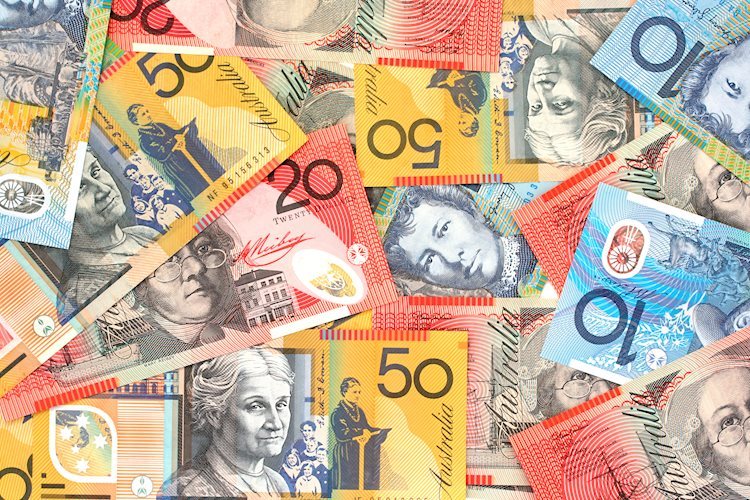- Australian Dollar is a top performer from the session, favored by hot CPI figures from May.
- Following May’s hot CPI figures, the market closely watches further inflation indications for potential RBA action.
- If the RBA holds hawkish, the downside for the Aussie is limited.
Wednesday’s session observed an incline in the Australian Dollar (AUD), as it rose to the mark of 0.6690 against the US Dollar, before retracing back to the 0.6650 mark. The recently released Australian inflation data, which came in higher than expected, benefited the Aussie against its peers, but the Greenback itself is also trading with vigor.
In Australia, despite signs of a weaker economy, the stubbornly high inflation acts as a hindrance to the Reserve Bank of Australia’s (RBA) potential rate cuts, potentially limiting downside pressure on the Aussie.
Daily Digest Market Movers: Aussie shows resilience amid hot CPI figures
- On the data front, Australia’s May Consumer Price Index CPI ran hot. The headline came in at 4.0% YoY vs. 3.8% expected and 3.6% in the previous month.
- This marked the third consecutive month of acceleration to the highest since November, moving further above the 2-3% target range
- As a result of these developments, the swaps market is now pricing in nearly 40% odds of a 25 bps rate hike on September 24, extending to nearly 50% for November 5.
- In the last meeting, Governor Bullock affirmed the RBA “will do what is necessary” to bring inflation back to target and foresees a longer period before inflation gets sustainably back in the target range.
- Accordingly, with the RBA ruling out rate cuts and with markets potentially considering rate hikes, the downside on the Aussie is set to remain constrained.
Technical analysis: AUD/USD looks to retain buyer interest at 20-day average
From a technical standpoint, the outlook remains fairly neutral with no clear directions. The Relative Strength Index (RSI) continues to stay above 50 but remains flat. The Moving Average Convergence Divergence (MACD) continues in the negative sphere with a series of red bars. Anticipation builds around buyers retaining the AUD/USD above the 20-day Simple Moving Average (SMA), a key defensive line that could dictate the future momentum of the pair.
Australian Dollar FAQs
One of the most significant factors for the Australian Dollar (AUD) is the level of interest rates set by the Reserve Bank of Australia (RBA). Because Australia is a resource-rich country another key driver is the price of its biggest export, Iron Ore. The health of the Chinese economy, its largest trading partner, is a factor, as well as inflation in Australia, its growth rate and Trade Balance. Market sentiment – whether investors are taking on more risky assets (risk-on) or seeking safe-havens (risk-off) – is also a factor, with risk-on positive for AUD.
The Reserve Bank of Australia (RBA) influences the Australian Dollar (AUD) by setting the level of interest rates that Australian banks can lend to each other. This influences the level of interest rates in the economy as a whole. The main goal of the RBA is to maintain a stable inflation rate of 2-3% by adjusting interest rates up or down. Relatively high interest rates compared to other major central banks support the AUD, and the opposite for relatively low. The RBA can also use quantitative easing and tightening to influence credit conditions, with the former AUD-negative and the latter AUD-positive.
China is Australia’s largest trading partner so the health of the Chinese economy is a major influence on the value of the Australian Dollar (AUD). When the Chinese economy is doing well it purchases more raw materials, goods and services from Australia, lifting demand for the AUD, and pushing up its value. The opposite is the case when the Chinese economy is not growing as fast as expected. Positive or negative surprises in Chinese growth data, therefore, often have a direct impact on the Australian Dollar and its pairs.
Iron Ore is Australia’s largest export, accounting for $118 billion a year according to data from 2021, with China as its primary destination. The price of Iron Ore, therefore, can be a driver of the Australian Dollar. Generally, if the price of Iron Ore rises, AUD also goes up, as aggregate demand for the currency increases. The opposite is the case if the price of Iron Ore falls. Higher Iron Ore prices also tend to result in a greater likelihood of a positive Trade Balance for Australia, which is also positive of the AUD.
The Trade Balance, which is the difference between what a country earns from its exports versus what it pays for its imports, is another factor that can influence the value of the Australian Dollar. If Australia produces highly sought after exports, then its currency will gain in value purely from the surplus demand created from foreign buyers seeking to purchase its exports versus what it spends to purchase imports. Therefore, a positive net Trade Balance strengthens the AUD, with the opposite effect if the Trade Balance is negative.
